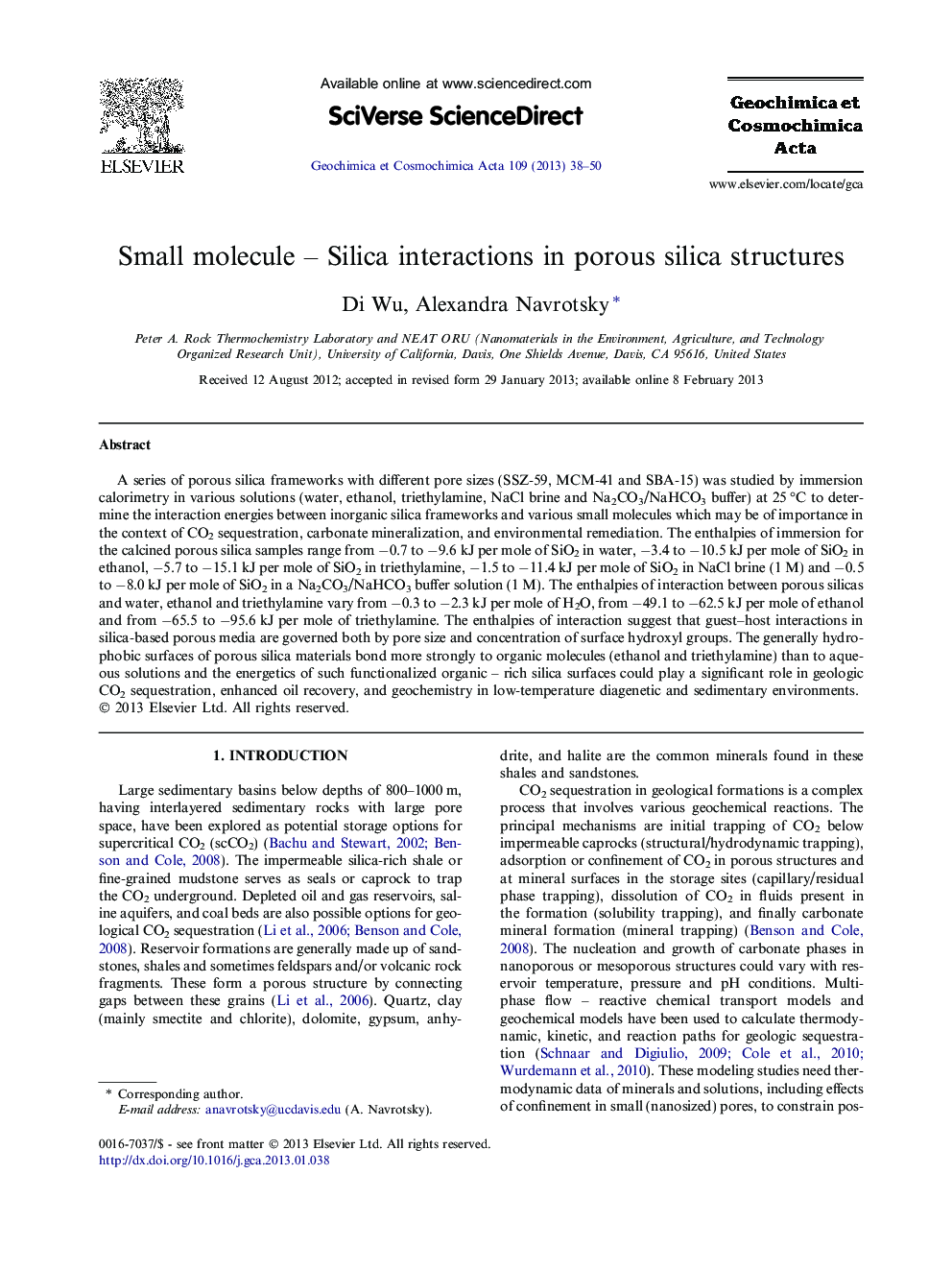| Article ID | Journal | Published Year | Pages | File Type |
|---|---|---|---|---|
| 4702429 | Geochimica et Cosmochimica Acta | 2013 | 13 Pages |
A series of porous silica frameworks with different pore sizes (SSZ-59, MCM-41 and SBA-15) was studied by immersion calorimetry in various solutions (water, ethanol, triethylamine, NaCl brine and Na2CO3/NaHCO3 buffer) at 25 °C to determine the interaction energies between inorganic silica frameworks and various small molecules which may be of importance in the context of CO2 sequestration, carbonate mineralization, and environmental remediation. The enthalpies of immersion for the calcined porous silica samples range from −0.7 to −9.6 kJ per mole of SiO2 in water, −3.4 to −10.5 kJ per mole of SiO2 in ethanol, −5.7 to −15.1 kJ per mole of SiO2 in triethylamine, −1.5 to −11.4 kJ per mole of SiO2 in NaCl brine (1 M) and −0.5 to −8.0 kJ per mole of SiO2 in a Na2CO3/NaHCO3 buffer solution (1 M). The enthalpies of interaction between porous silicas and water, ethanol and triethylamine vary from −0.3 to −2.3 kJ per mole of H2O, from −49.1 to −62.5 kJ per mole of ethanol and from −65.5 to −95.6 kJ per mole of triethylamine. The enthalpies of interaction suggest that guest–host interactions in silica-based porous media are governed both by pore size and concentration of surface hydroxyl groups. The generally hydrophobic surfaces of porous silica materials bond more strongly to organic molecules (ethanol and triethylamine) than to aqueous solutions and the energetics of such functionalized organic – rich silica surfaces could play a significant role in geologic CO2 sequestration, enhanced oil recovery, and geochemistry in low-temperature diagenetic and sedimentary environments.
